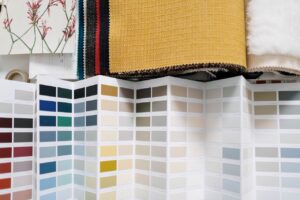
The true-up process is a key step in corporate finance. It refers to the adjustment made to correct estimates with actual figures. This process often follows forecasting or provisional accounting. Without true-up, financial reports can be inaccurate. These corrections help maintain compliance and prevent costly errors.
Just as businesses rely on structured checklists for accurate reconciliation during true-ups, similar diligence is necessary when evaluating Canadian online casinos, which can be reviewed at easyoutcasinos.com. The approach ensures all factors are reviewed carefully and methodically.
This guide outlines each stage of the true-up process. Use it to confirm figures, catch discrepancies early, and meet audit standards. Consistency and accuracy are the goals throughout.
Define the True-Up Process
A true-up is a financial adjustment. It corrects the difference between estimated and actual figures. This often happens at the end of a reporting period. Companies use it to keep records accurate and up to date.
True-ups are common in payroll, taxes, and vendor payments. For example, if a company estimated tax expenses but paid a different amount, a true-up fixes that gap. These corrections help avoid overpayments or underpayments. The goal is to match the books with real costs. Accurate reporting supports audits and keeps financial statements reliable.
Gather All Preliminary Data
Start by gathering all original estimates. Then collect the actual figures for the same period. Compare both sets to find any gaps or differences.
Use reliable documents like contracts, invoices, time sheets, or accrual records. Keep files labelled and sorted by date or source.
Good organisation helps reduce mistakes. Use version control to track changes and keep past records. This also makes future audits easier.
Clear data helps identify errors early. It also supports accurate true-up entries. The more structured your files, the faster the process.
Verify Data Accuracy
Check all data for accuracy before moving forward. Make sure figures are correct, complete, and up to date. Compare totals and double-check entries against source documents.
Use peer reviews or automated tools to find errors. These checks help catch issues early. Look out for common problems like typos, wrong dates, or missing entries.
Outdated records can lead to wrong results. Always use the latest versions of files. Keep a clear audit trail for every figure used.
Proper checks reduce risk and support clean financial reports. Accuracy here makes the true-up process more reliable.
Perform Reconciliation Calculations
Work out the difference between estimated and actual amounts. This gap is called a variance. Use basic formulas to subtract actual figures from projections.
Reconcile each variance using supporting records. Adjust entries to reflect the correct values. Methods may include journal entries, balance sheet updates, or accrual changes.
Always record why each adjustment was made. Add notes to explain your calculations. This is important for audits and internal checks.
Clear documentation builds trust and helps meet compliance rules. Keep a copy of all records and backup sources for review.
Align with Compliance Requirements
Make sure the true-up meets all legal and policy rules. This includes tax laws, audit needs, and financial reporting standards.
Check your company’s internal policies first. Then review external rules like GAAP or IFRS. Use these as a guide when making adjustments.
Keep clear records of every step taken. Good documentation supports audits and avoids questions later.
If unsure, ask a finance or legal team for help. Staying compliant protects the business and avoids fines. Every change should be easy to trace back to source documents.
Document and Review the Final Output
Prepare the final true-up report in a clear format. Include original estimates, actual figures, variances, and all adjustments made. Attach supporting documents for each entry.
Before submission, carry out a last internal check. This helps catch any missed errors or missing details. Use a checklist to confirm all steps are complete.
Accounting software can help speed up this task. It also keeps records in one place and reduces manual work.
Once reviewed, save a final copy for audit use. Share it with all required departments or managers.
Communicate Results and Lessons Learned
Summarise key results for all internal teams. Highlight any large variances or repeated errors.Look for patterns that may show process gaps. Fixing these can save time in future true-ups.
Write down lessons learned and update internal workflows if needed. Keep this record for future audits or training. Clear communication helps improve accuracy and avoid repeated mistakes.
Accuracy, consistency, and planning are key to a reliable true-up. A clear checklist and strong review process help reduce errors and protect financial records. Careful tracking builds trust and supports better decisions.



















